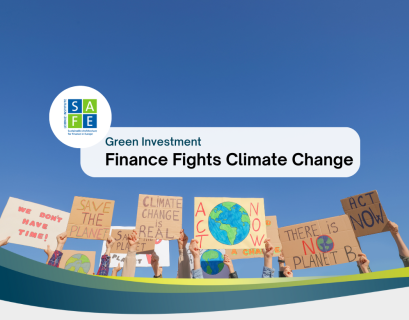The fight against global warming stands and falls with the availability of technology. Just as important as the technical know-how to build photovoltaic systems, electric motors and energy storage systems is the capital to finance them. According to the International Energy Agency, there is a global capital requirement of around four trillion US dollars annually by the end of the decade to drive the energy transition forward at the necessary pace. The financial markets are up to the challenge – provided the bond markets play along.
The conditions are right: Experts are observing a megatrend on the bond markets that benefits the climate, society, the economy and, last but not least, investors. “The market volume of sustainable bonds could increase to up to USD 4.5 trillion by 2025,” says Simon Frank, Senior Investment Advisor at Pictet Asset Management. With Global Sustainable Credit, Pictet has launched a sustainability fund that specialises in corporate bonds. He explains what opportunities Frank sees in the segment and what role ESG impact plays in the fund strategy in an interview with Senior Investment Analyst Florian Koch from Scope.
Investing in the green future
Pictet – Global Sustainable Credit is an Article 9 impact fund, with at least half of the portfolio invested in sustainable assets – for example, bonds issued by companies whose business model makes positive and measurable contributions to a more environmentally and socially sustainable future. Special thematic focus areas: Energy transition, energy efficiency, water supply, healthcare and social inclusion.
A large part of the sustainable investments are so-called Green Bonds with the ESG seal. Here, the issuer undertakes to clearly define the intended use of the invested capital and to achieve specific sustainability goals – such as the 17 Sustainable Development Goals (SDG) of the United Nations. Traditional bonds without a sustainability focus are also part of the portfolio. But here, too, fund managers are guided by ESG criteria and pay attention to the smallest possible ecological footprint.
Systematic selection
Pictet pursues a bottom-up approach to stock selection. The starting point is the global credit universe with 3000 issuers. The first step is a financial screening by credit analysts to identify 1000 solvent and financially well positioned companies. This is followed by the second screening – this time according to ESG key figures. In the third step of the process, the portfolio managers scrutinise the fundamentals of the 500 remaining candidates to build the final portfolio of around 100 stocks. One high-yield issuer that made it into the portfolio is the Brazilian company Klabin. The pulp and paper manufacturer has a strong financial profile and pursues an active sustainability policy, particularly in the area of biodiversity.
The fund management of Pictet – Global Sustainable Credit attaches great importance to active ownership – although bond investors, unlike shareholders, have no voting rights. Find out in the video (German) how the dialogue with the company management is nevertheless successful.
This is an automated translation of the original German article.
Source: Scope Fund Analysis
Cover Image: Unsplash





